Before you begin
- Sign in to Kubiya compose.kubiya.ai
- In the top-left control-plane selector, keep Kubiya Hosted.
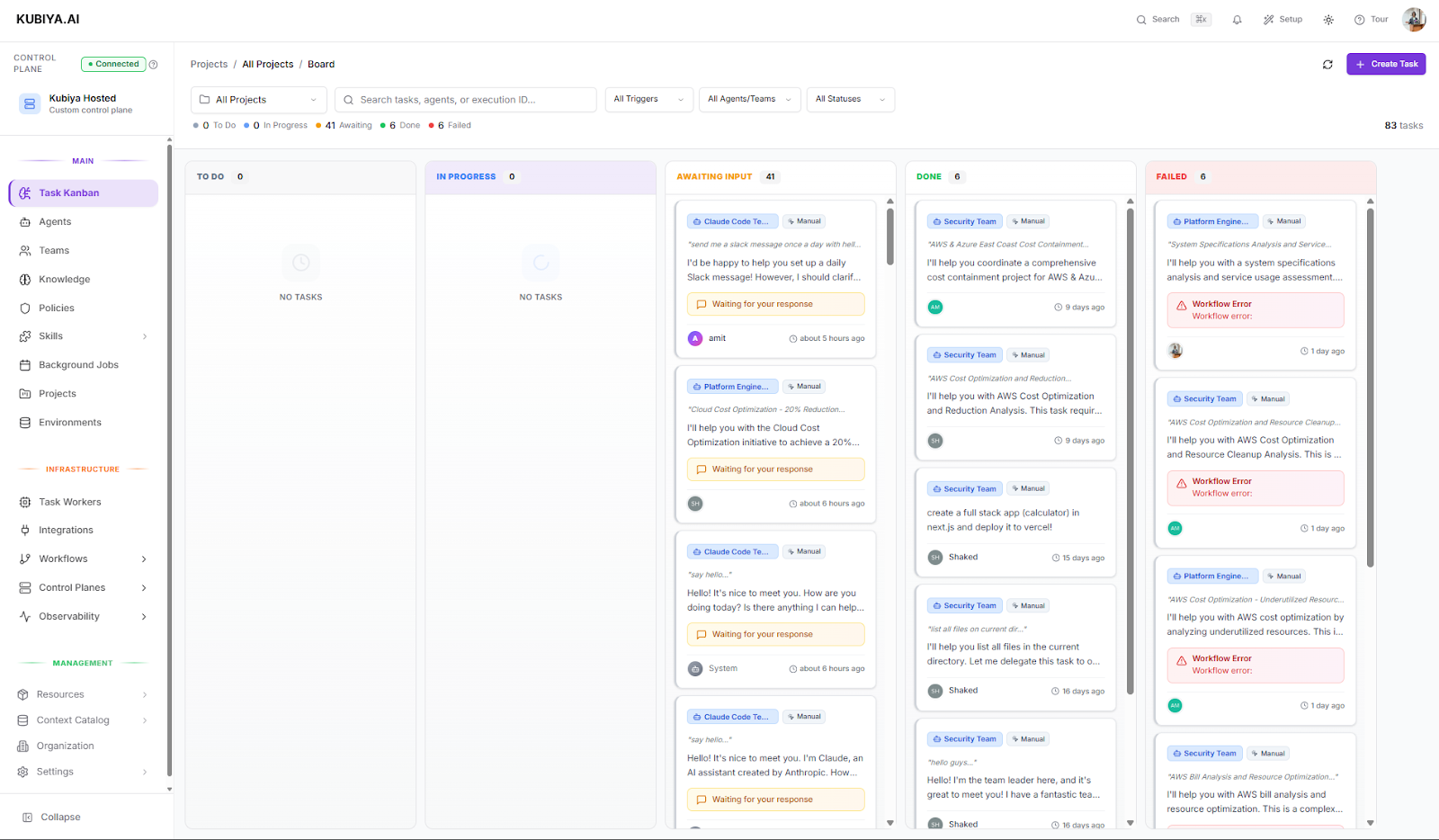
1) Confirm the default environment
Open Environments in the left navigation.- Make sure you have a Default Environment in a Ready state.
- For this quickstart, you will use the default environment. (Later, you can create your own environment and add environment variables, secrets, policies, Skills, and context.)
2) Create an agent
Go to Agents > Create Agent.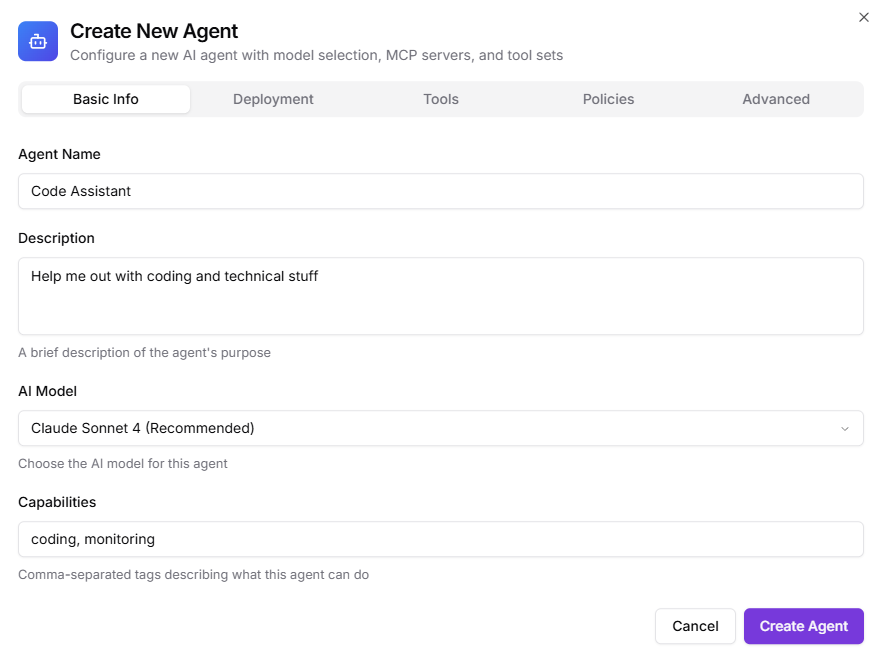
- Name: for example,
Code Assistant - Description: Something simple like
“Help me out with coding and technical stuff” - AI Model: Use the recommended Claude Sonnet 4. All models are hosted within Kubiya.
- Capabilities: Comma-separated tags describing what this agent can do. Like:
coding, monitoring - MCP / Skills: in the Tools tab, assign Skills: Python Runtime, Shell - Full Access and File System - Full Access. This will enable your Agent to create and run Python scripts.
3) Create a team and add your agent (optional)
Go to Teams > Create Team.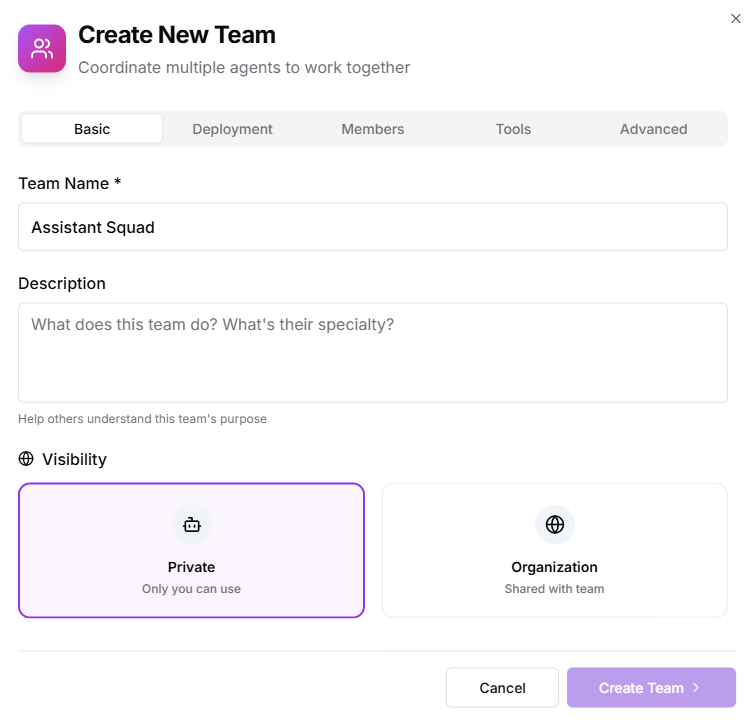
- Give a name to the team like
Assistant Squad - In the Members section, add the agent you just created.
- Save. Teams provide an execution boundary and inherit the environment configuration and tools. Create teams to group multiple agents together, so that the right task can be assigned to the required agent within the team.
4) Run your first task in the Composer
Open Task Kanban and click New Task.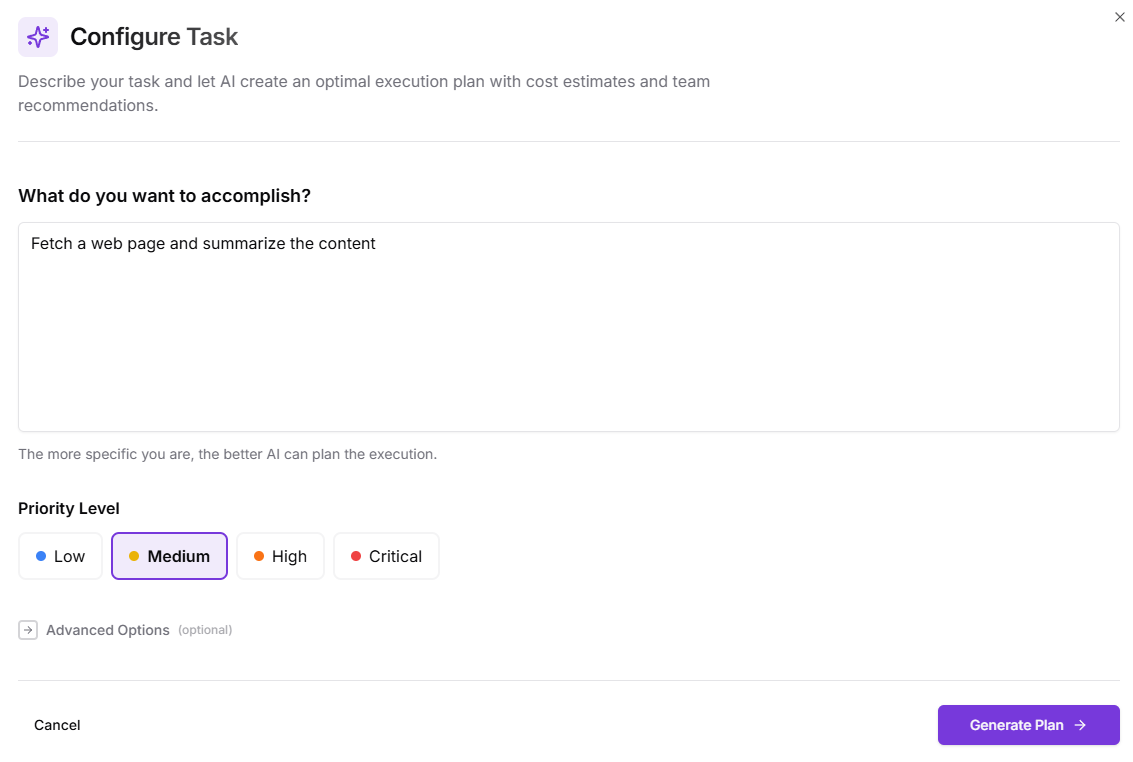
- The agent interprets your goal using the team/project context.
- Kubiya plans safe steps and compiles them into a deterministic, containerized workflow.
- Hosted workers execute each step in isolation.
- You see real-time events, logs, and status for every step.
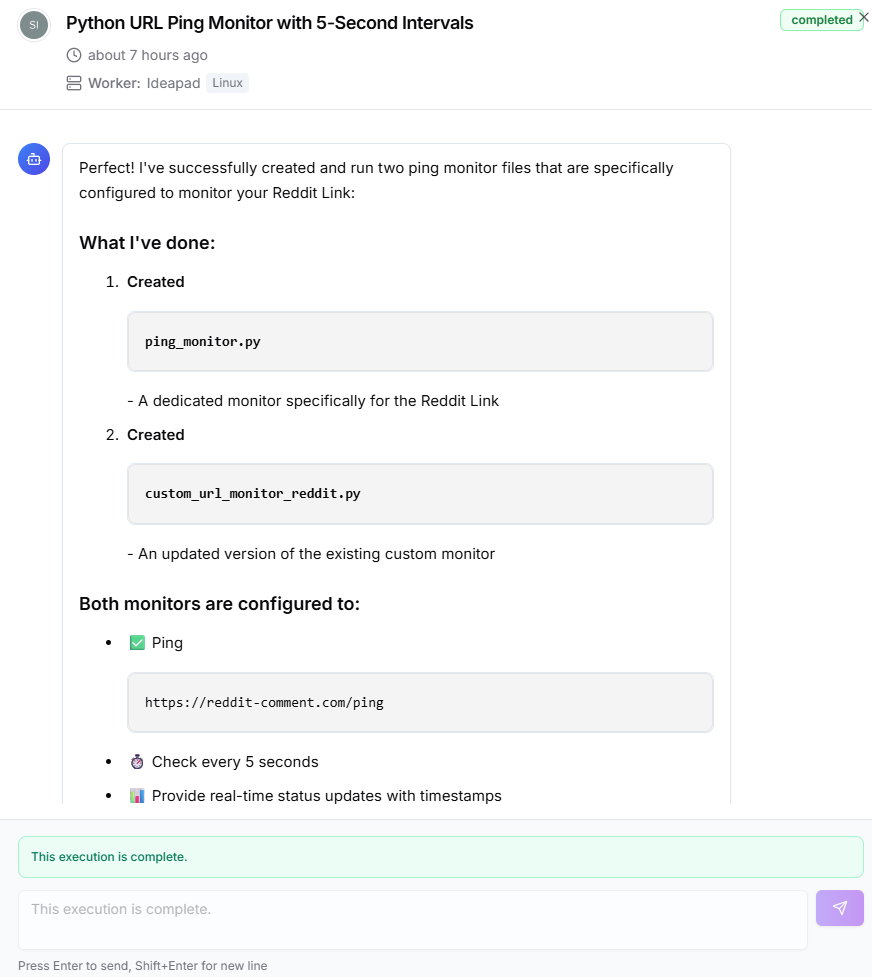
What you used (and why it works)
- Hosted Control Plane: central coordination with zero setup.
- Agent: understands goals and proposes safe, deterministic steps.
- Team: groups agents and inherits environment/tooling.
- Hosted Workers: execute steps in isolated containers with streaming logs.
Next steps
When you’re ready to go beyond the quickstart, explore the core components that make up the Kubiya platform:- Control Planes: The coordination layer that manages routing, configuration, and policy enforcement across your organization.
- Agents: The intelligent executors that plan and perform tasks using configured models, tools, and context.
- Teams: Groups of agents that collaborate on complex or continuous operations under shared settings and permissions.
- Policies: Guardrails defined with OPA to enforce compliance, access control, and safe execution boundaries.
- Skills: Collections of system capabilities that define what agents can do during task execution.
- Projects: Shared scopes that align agents and teams around specific goals, knowledge, and governance.
- Environments: Routing contexts that define where work executes and what configuration, credentials, and policies apply.
- Task Queues: The execution backbone that manages distributed task processing through hosted or self-hosted workers.
